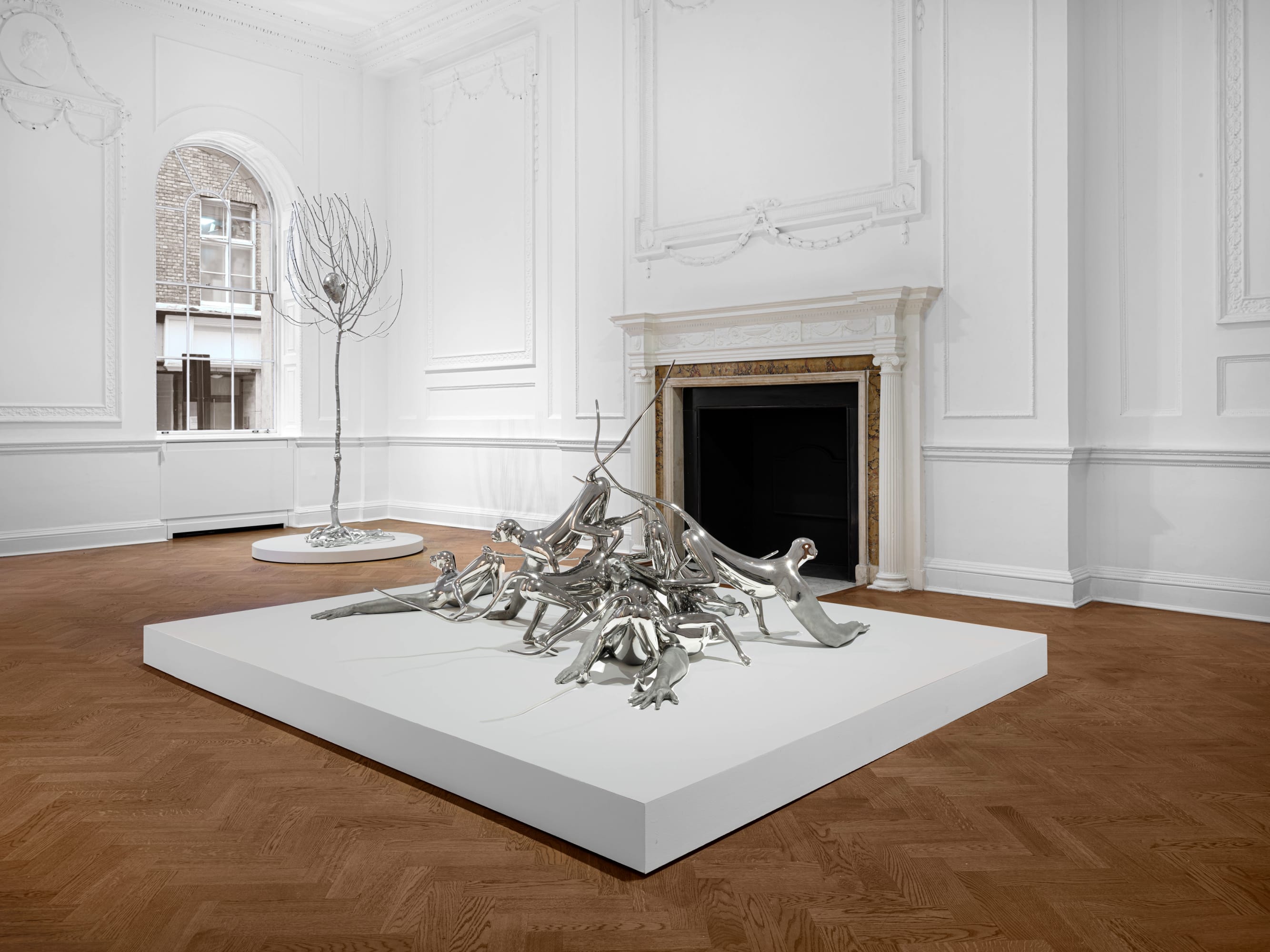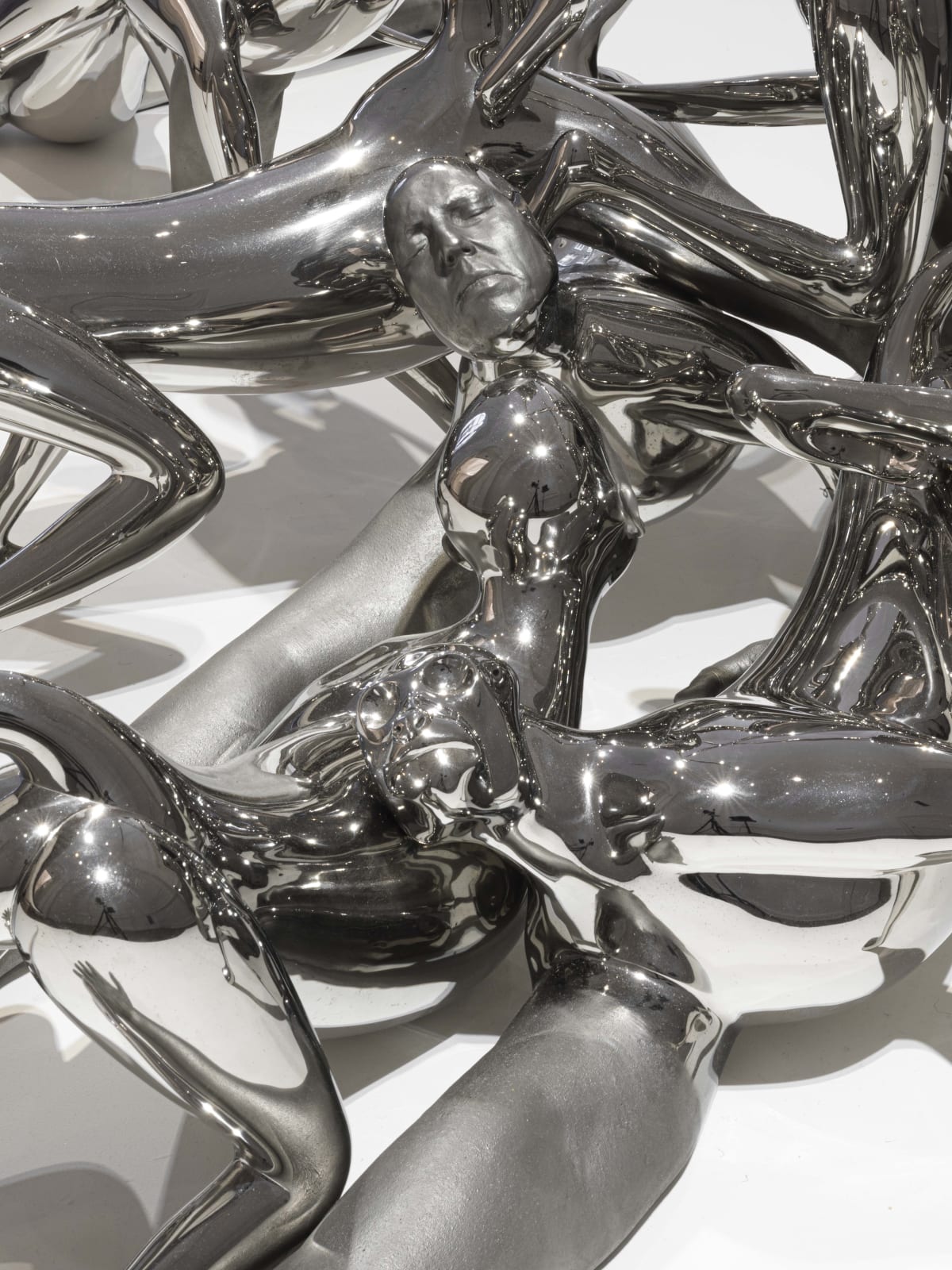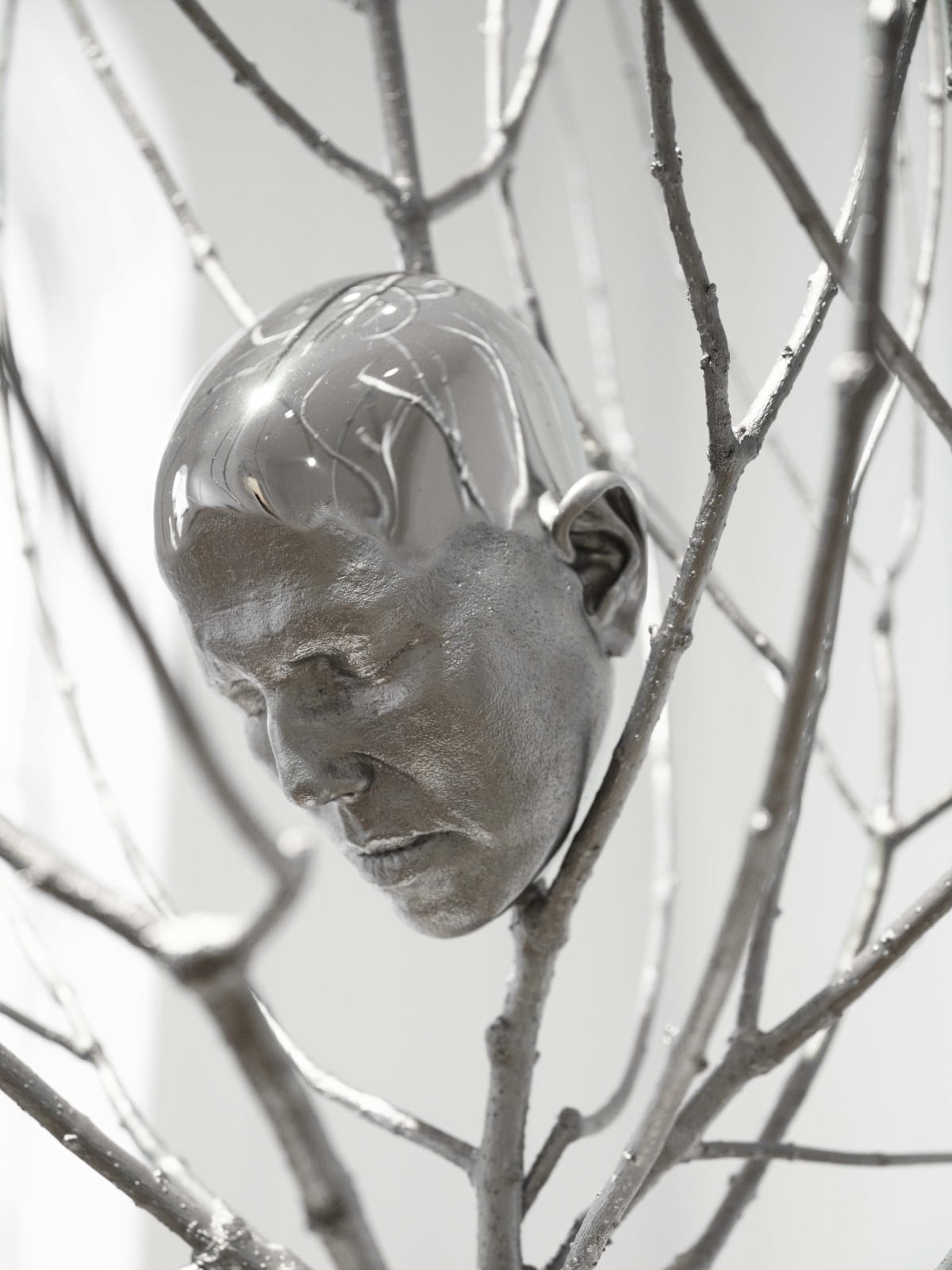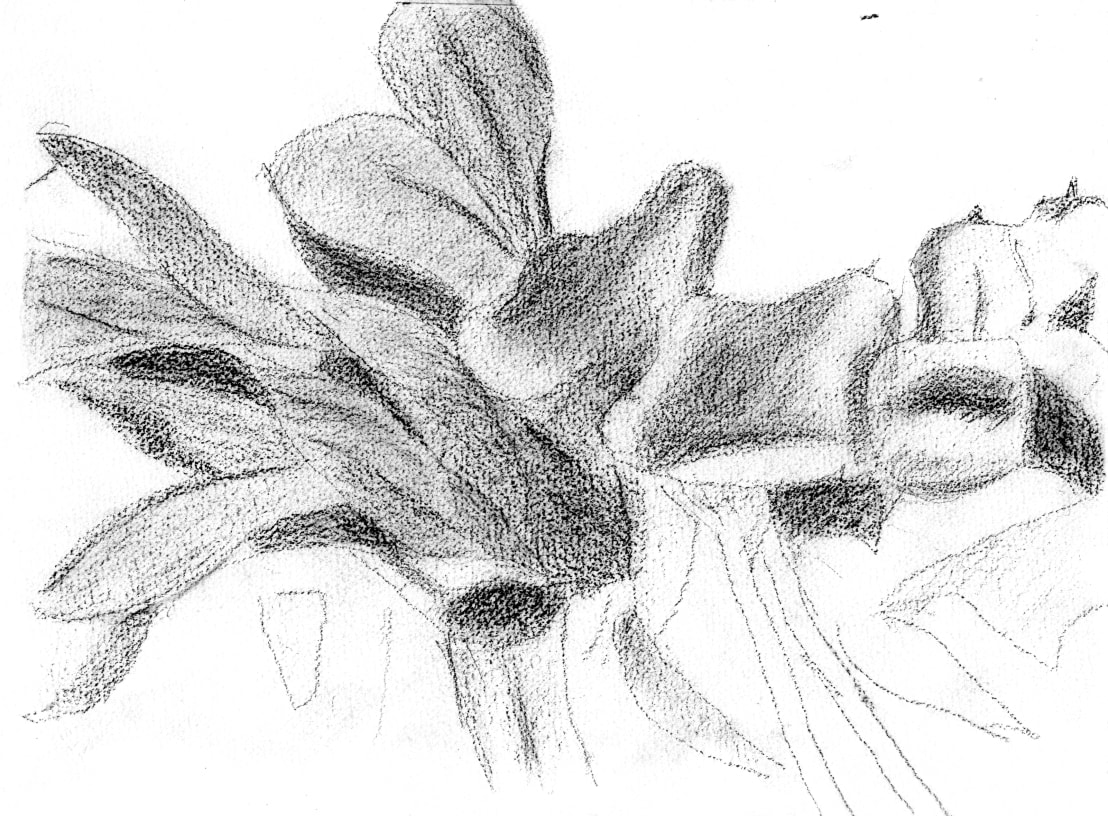Overview
In American sculptor Rona Pondick’s first UK solo presentation, animals and humans are fused together in uncanny hybrid figures, while trees bear human heads in the place of fruits or flowering buds. The stainless steel and bronze sculptures, presented on the ground floor of the gallery, span the evolution of this significant body of work within Pondick’s oeuvre, reflecting her experimental approach to materials, technique, process and imagery.
In American sculptor Rona Pondick’s first UK solo presentation, animals and humans are fused together in uncanny hybrid figures, while trees bear human heads in the place of fruits or flowering buds. The stainless steel and bronze sculptures, presented on the ground floor of the gallery, span the evolution of this significant body of work within Pondick’s oeuvre, reflecting her experimental approach to materials, technique, process and imagery.
Foregrounding ideas of metamorphosis and transformation, Pondick draws upon a rich body of literary, art-historical and scientific references: from Ancient Egyptian sphinxes and Ovid’s retelling of classical mythology in the Metamorphoses to contemporary cloning technologies, the 1984 cinematic cult classic The Terminator and, an enduring touchstone for Pondick, Franz Kafka’s giant insect.
From the beginning, my work has been about a metamorphosis. It brings me back to Franz Kafka and the idea of transformation, something in flux... things mutating... Each piece was about an evolution. Within each sculpture, the form would start shifting, and, as the form shifted, the meaning changed.— Rona Pondick
Pondick established her reputation as an artist in 1988 with the site-specific installation, Beds, at SculptureCenter, New York, followed by a major solo exhibition at the Institute of Contemporary Art, Boston in 1989. Her work is now housed in prominent international collections including those of the Centre Pompidou, Paris, Tel Aviv Museum of Art, The Metropolitan Museum of Art, New York and San Francisco Museum of Modern Art.
In the four decades of her artistic career, Pondick has worked across a wide variety of traditional and nontraditional materials, and her use of stainless steel has been particularly pivotal in steering the direction of her sculptural practice. First employed in the late 1990s when she created her earliest animal-human hybrids, the reflective material is intimately connected to her deep interest in states of metamorphosis, allowing her to experiment with surface texture – ‘it looks as if it’s disintegrating in front of you, as if it were in flux.’ Viewers’ bodies are captured, distorted and mirrored as reflections upon the shiny surfaces of the steel sculptures, integrating their image into the tangle of human, plant and animal forms.
Since 1998, Pondick has been taking moulds from her own head, arms and legs. She then manipulates them to create metal casts, which she incorporates into her sculptures, carefully melding the realistic skin texture of these human body parts with the sleek, smooth finish of the animal elements. All five works included in the exhibition – three animal hybrids, Fox (1998– 99), Monkeys (1998–2001) and Muskrat (2002–05), and two trees, Head in Tree (2006–08) and Slim Jack (2021–22) – feature the artist’s head. Reworked from the same original life cast, the heads trace a line of continuity through 25 years of artistic production in which Pondick has combined hand-sculpting, 3D computer modelling and traditional metal casting techniques to create her fantastical figurative works.
At first, I wasn’t consciously using casts taken from my own body to make a self-portrait, but because I love the level of detail that remains in life casts. There is a great quote from Bernini saying that once you take the color out of someone’s face it looks nothing like them. I find it fascinating that my head has been in every sculpture of mine since 1998 and most people don’t know it’s me. — Rona Pondick
Playing with scale, Pondick materialises her interest in transformative states of being through dramatic shifts between her animal, human and arboreal elements. In one sculpture, a pea-sized rendering of her own head is placed atop the bulbous body of a muskrat, while in others, it is enlarged so that it weighs down the neck of a fox, or shrunk to mimic buds developing on the twig-like branches of a tree. ‘It is important for me to see what happens when these opposites come together in a sensate way, ’ says the artist, ‘what kinds of meanings they suggest to viewers emotionally, psychologically, and materially.’
Combining the human and nonhuman, the sculptures pose wider questions about the interrelationships between biography and mythology, the psychological and the bodily, the uncanny and the familiar, to encompass the complexities of human existence through Pondick’s eyes.
Rona Pondick: Selected Work 1998–2022 is presented alongside two concurrent solo exhibitions at Thaddaeus Ropac London: Markus Schinwald: Monuments and Extensions and a group of paintings from Lee Bul’s Perdu series.
Video


























































































































































































